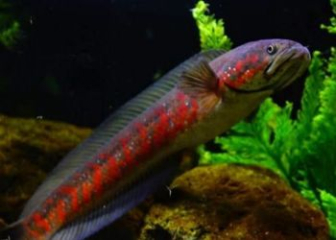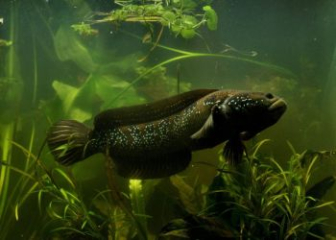Snakehead fish Channa punctata - Simple and successful fish farming tips
Blog | by
Channa punctata, also known as spotted snakehead fish, is a freshwater fish belonging to the snakehead family, with a striking appearance, aggressive temperament, and good adaptability.
Channa punctata (spotted snakehead fish, spotted snakehead fish), a fish belonging to the snakehead family, has a striking appearance with characteristic black spots and a strong temperament as well as high adaptability. They are not only valuable in the commercial industry but are also one of the popular ornamental snakehead fish in the aquatic world.
In today's article, let's learn about the origin , habits and secrets of raising Channa punctata snakehead fish simply but most successfully!
Information about snakehead fish Channa punctata :
| Scientific name | Channa punctata |
| Common name | Spotted snakehead fish, spotted snakehead fish, spotted snakehead fish, Channa punctata snakehead fish |
| Surname | Anabantiformes |
| Spend | Channa |
| Source | India |
| Size | 15 - 25 cm |
| Lifespan | 4 - 5 years |
Origin and distribution of snakehead fish Channa punctata
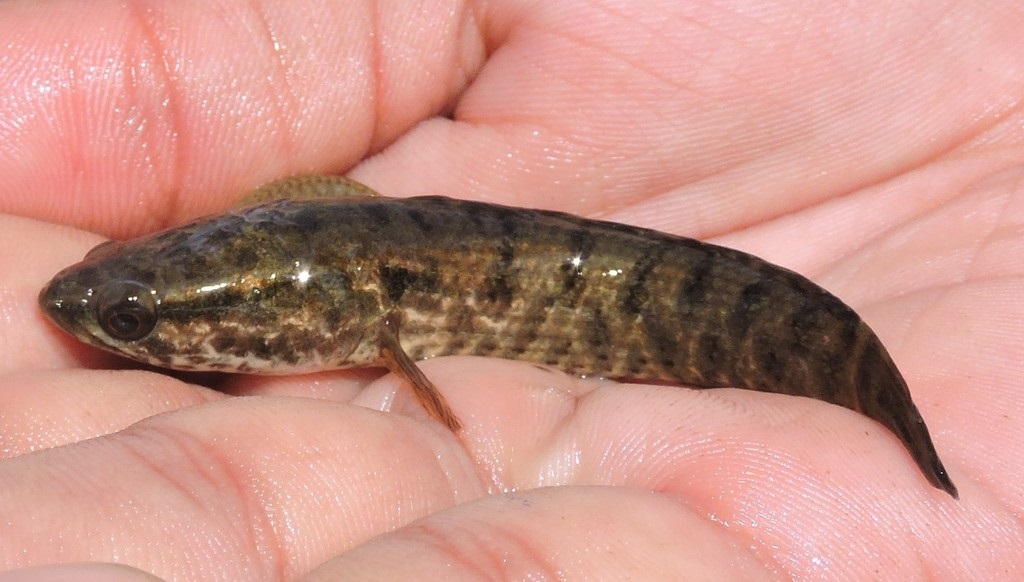
Channa punctata is native to India.
Channa punctata snakehead fish, also known as spotted snakehead fish, spotted snakehead fish, originates from India, specifically distributed in the following areas:
- India
- Bangladesh
- Nepal
- Sri Lanka
- Pakistan
In addition, they are also widely distributed in southern China, Myanmar, Laos, Thailand, Cambodia and some areas in Vietnam such as the Mekong Delta and the Red River Delta.
In nature, they often live in ponds, canals, rice fields or even small rivers, where there are many aquatic plants, slow-moving water or stagnant ponds with soft mud bottoms.
Currently, snakehead fish Channa punctata is exploited for food and raised as an aquarium fish thanks to its impressive appearance and interesting hunting behavior.
Appearance of snakehead fish Channa punctata

Impressive appearance of snakehead fish Channa punctata
Right below are the physical characteristics of Channa punctata snakehead fish. Let's learn together to be able to distinguish them from other fish in the snakehead family!
- Size : Average 15 - 25 cm, adult fish can be up to 30 cm long if kept in ideal conditions.
- Shape : Body is elongated, triangular, narrowing at the tail.
- Head : Slightly flat, triangular, wide mouth, protruding lower jaw.
- Color : The fish is olive green, gray-brown or light gray-green, depending on the environment, the belly is white or light yellow.
- Pattern : On the fish body there are distinct black or dark round spots, distributed throughout the body, especially in the middle and near the tail.
- Dorsal fin, anal fin, caudal fin : Edged with pale green or yellow with speckled spots.
- Eyes : Round, large, located near the top of the head.
Snakehead fish Channa punctata behavior
The habits and behavior of snakehead fish Channa punctata reflect the strong survival instinct and predatory nature of the snakehead family, specifically as follows:
Is a carnivorous fish - predatory
Snakehead fish Channa punctata is a carnivorous fish, they have the habit of hunting in the early morning and late afternoon. They also often hide at the bottom of ponds, in rocky crevices or aquatic bushes waiting for prey to pass by so they can rush out and grab it in the blink of an eye.
Good adaptability
Channa punctata is a snakehead fish that can live in both fresh water and slightly brackish water. In addition, thanks to the accessory respiratory organ above the gills that helps the fish take oxygen directly from the air, it can live in water with little oxygen.
Territorial and defensive
Channa punctata is very territorial, especially in adults, it will tend to find and maintain a separate area for itself and protect it from being invaded by other fish. When threatened, it will inflate its gills, chase and quickly rush at its opponent to attack without fear. In some cases, when encountering larger and more aggressive fish, it can hide in moss or mud to protect itself.
Capable of moving on land
Like many other snakehead fish, Channa punctata is able to move on land by crawling on wet ground to find new lands thanks to its strong pectoral fins. They will often move at night when the temperature drops.
In addition, it also has the ability to withstand drought very well by burying itself in mud to survive temporarily when water sources are exhausted.
Reproduction in bubble nests
Snakehead fish Channa punctata breeds during the rainy season from about May to October, when the water level is high, the temperature is warm and there is rain. Their reproductive pattern is as follows:
- Males build nests of air bubbles and aquatic plants in shallow waters.
- The female fish lays eggs in the bubble nest, the male fish fertilizes the eggs directly and then guards and protects the eggs.
- After hatching, the baby fish will be protected by their parents until they are able to fend for themselves.
Tips for raising Channa punctata (Spotted Snakehead) from A to Z
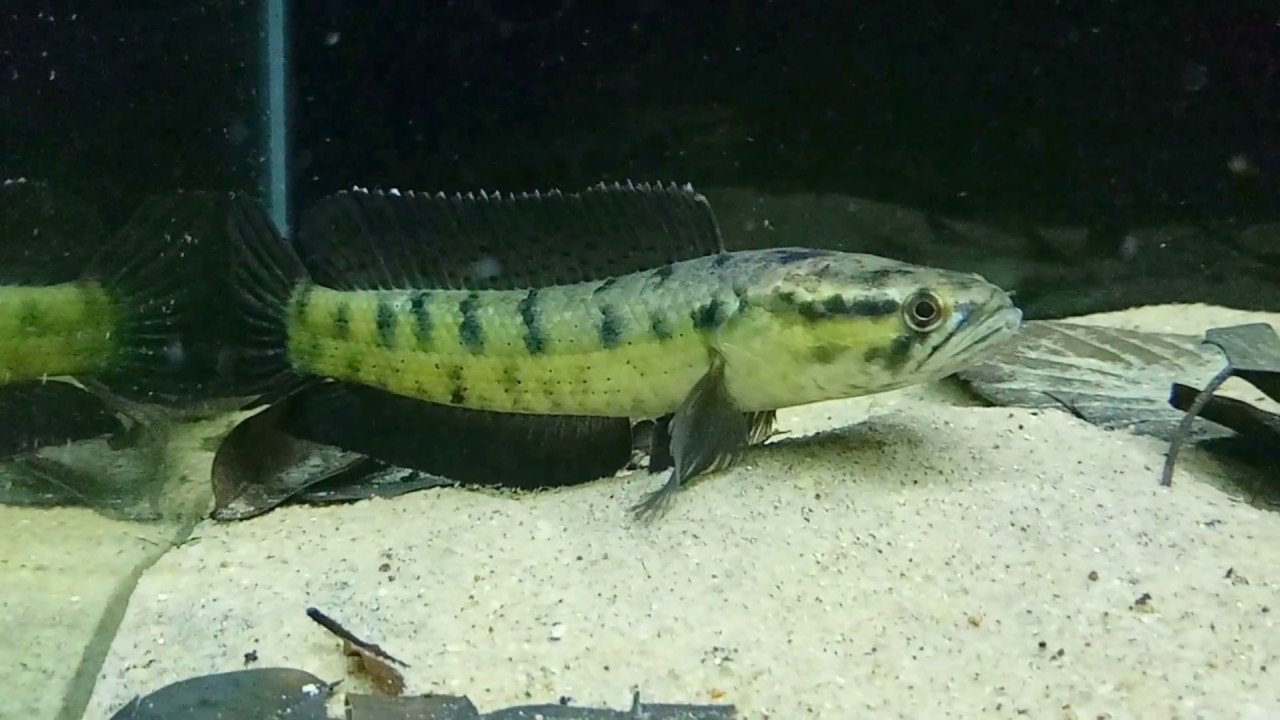
A spotted snakehead fish Channa punctata kept in an aquarium.
If you want to successfully raise spotted snakehead fish for the first time, please refer to the tips we have shared below.
Preparing tanks and ponds for raising Channa punctata fish
The first important secret is that you need to prepare a suitable and optimal place to raise spotted snakehead fish, specifically as follows:
- Cement tank, glass tank : Minimum size 80 x 50 x 50 cm for 5 - 7 fish.
- Earthen pond : Size depends on your area but the pond bottom needs to be 1 - 1m2 deep.
- Cage farming : Sturdy net bottom, area from 5 - 10 m2 or more.
- Decoration : If kept in a tank, add a layer of muddy substrate, plant many aquatic plants, and have a circulating water filtration system.
Water environment treatment
After preparing the breeding site, you need to treat the water to achieve the following basic parameters:
- Clean water : Unpolluted, not contaminated with alum.
- pH : 6.5 - 7.5
- Temperature : 25 - 32 degrees C.
- Dissolved oxygen : Over 3 mg/L
- Pond treatment : Need to add lime to kill bacteria 7-10 days before releasing fish.
Select healthy fish
The next important step is that you need to choose healthy Channa punctata fish to ensure they can grow best, specifically as follows.
Select fish breed:
- Healthy fish, size from 3 - 5 cm.
- Fish are not scratched, not lethargic, and do not have skin diseases.
- Bright fish color, good reflexes, active.
Fish stocking density:
- Pond : New stocking density 4 - 5 fish/m²
- Cement tank : 5 - 6 fish/m²
- Cage : 20–25 birds/m³
- Aquarium : Depends on tank size.
How to release fish:
- Fish should be released in the cool afternoon, avoid releasing during extremely hot weather.
- Before releasing the fish, soak the bag of fish in the tank for 15 - 20 minutes before releasing to avoid thermal shock to the fish.
Diet suitable for snakehead fish Channa punctata
For each stage and age, you need to feed spotted snakehead fish different types of food, specifically as follows:
- Baby fish : Bloodworms, water mites, small pellets for carnivorous fish.
- Adult fish : trash fish, shrimp, prawns, pellets for carnivorous fish.
Feeding frequency :
- Fish should be fed twice daily in the early morning and cool evening.
- Feed amount is 4 - 6% of fish weight.
- Limit overfeeding fish as excess food can lead to water pollution.
Water quality management
An equally important factor that helps spotted snakehead fish grow well is that you need to control and manage water quality regularly, specifically as follows:
- Change tank water : 30 - 50% of water volume per week.
- Pond : Add 20 - 30% clean water every month, use probiotics to treat the pond bottom.
- Cage : Need to check the quality of natural flow, remove leftover food and waste every day.
Prevention and treatment of diseases for snakehead fish Channa punctata
To keep Channa punctata fish healthy and disease-free, you need to pay attention to observing, preventing and treating diseases for them.
Common diseases:
| Disease name | Symptom | Reason | Treatment |
| Fish with body fungus |
Fish scales peeled off The whole body is ulcerated and has pus. Fish lethargic, loss of appetite |
Contaminated water Fish bite each other and get scratches, creating conditions for bacteria and fungi to grow. |
Isolate sick fish Slightly increase water temperature Bathe fish with diluted salt water. Use fish fungus medicine |
| Fish hemorrhage |
Red fish Fish stopped eating, tired, just lying still in one place |
Due to fish infected with Aeromonas bacteria |
Isolate sick fish. Use of antibiotics |
| Fish infected with parasites |
Fish are itchy and rub themselves against rocks. Both stopped eating |
Due to anchor worms, flukes in polluted water environment |
Isolate sick fish Use antiparasitic drugs |
Prevention:
- Add garlic, digestive enzymes, and vitamin C to fish food every week to increase resistance.
- Bathe fish with diluted salt periodically.
- Ensure strict water quality.
- Can combine planting duckweed and water spinach to improve water.
Price of snakehead fish Channa punctata
Currently, in the Vietnamese market, Channa punctata snakehead fish is not widely available, so price information about this fish has not been widely published, however, it will fluctuate from about 60,000 - 100,000 VND/kg.
The price of Channa punctata in Bangladesh is around 100 - 150 BDT/kg (around 22,000 - 35,000 VND/kg)
Image of snakehead fish Channa punctata
Below are some beautiful, clear pictures of the spotted snakehead fish (Channa punctata). Please take a look to better understand and recognize this fish species!

A Channa punctata snakehead fish with a striking appearance in the aquarium.
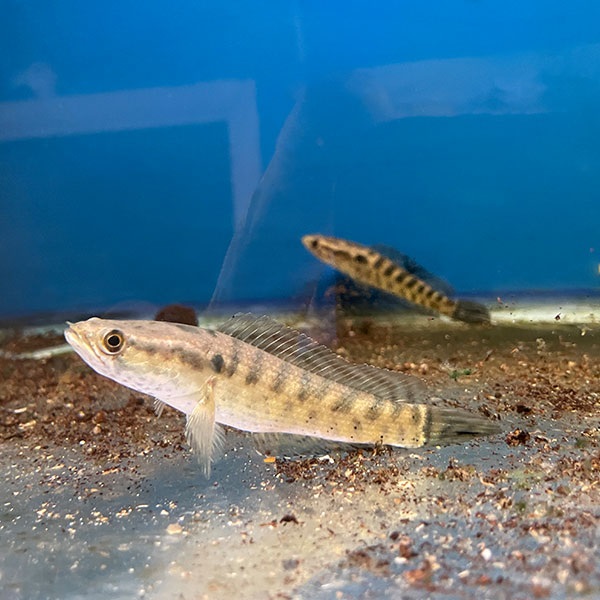
Two small, adorable Channa punctata snakehead fish.

Prominent black spots on the body of a snakehead fish Channa punctata.
Above, snakehead.info has shared information about snakehead fish Channa punctata in the most complete and detailed way, hoping to help you succeed in raising this fish species. Although they are not very popular in Vietnam at present, with high value in the food and aquatic industry, this fish species will certainly become more popular in the future.
Don't forget to visit our Blog section to read more interesting articles about snakehead fish, goodbye and see you soon.
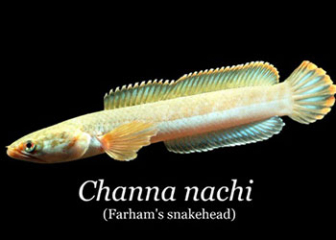



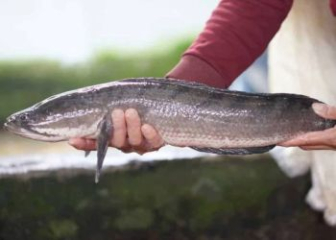
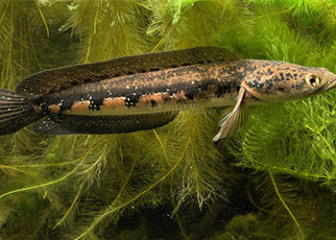
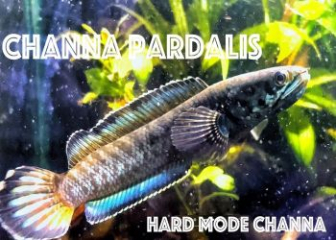
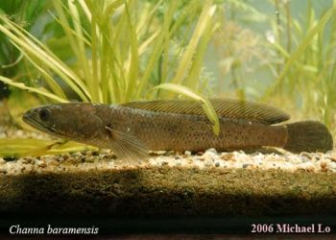
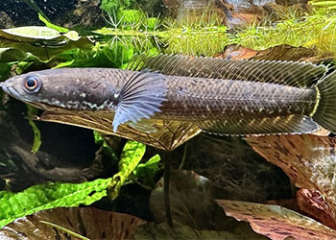
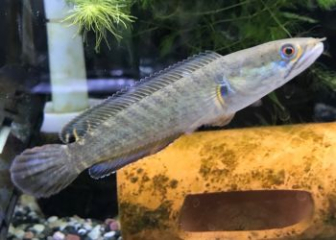
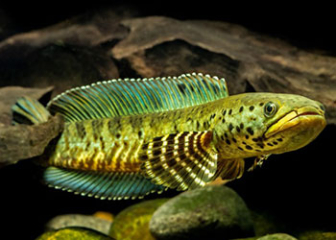
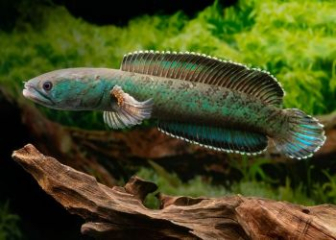

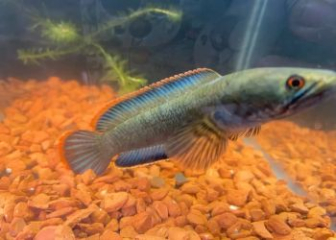
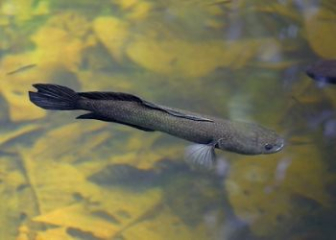
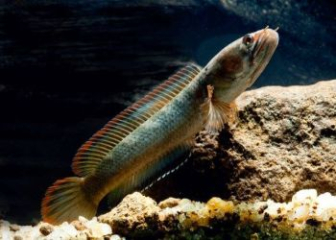
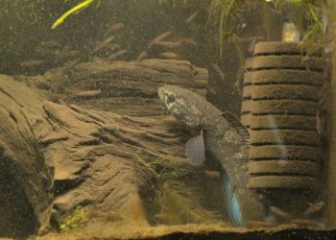
_350x250.jpg)
